It’s no secret that soaring medical costs have created a national health crisis. Health care prices are rising three times faster than salaries.1 Consider this: If the cost of groceries were rising at the same rate as health care, you’d be paying $55 for a dozen eggs.2 We spend twice as much per person on health care as other developed countries, but we’re not getting our money’s worth.3 In fact, our life expectancy ranks 51st in the world behind Guam, South Korea and Iceland.4
Where is the money going?
We all feel the burden of skyrocketing medical costs on a personal level through our health insurance premiums. Though many people believe that a substantial portion of their insurance premiums end up in the pockets of insurance companies, it’s not the case. On average, more than 85 percent of every insurance premium pays directly for medical costs.5 In fact, health insurance companies have some of the slimmest profit margins in the health care industry.6
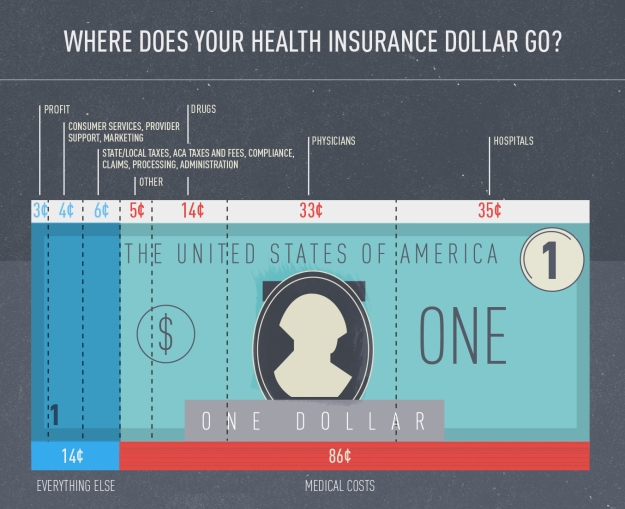
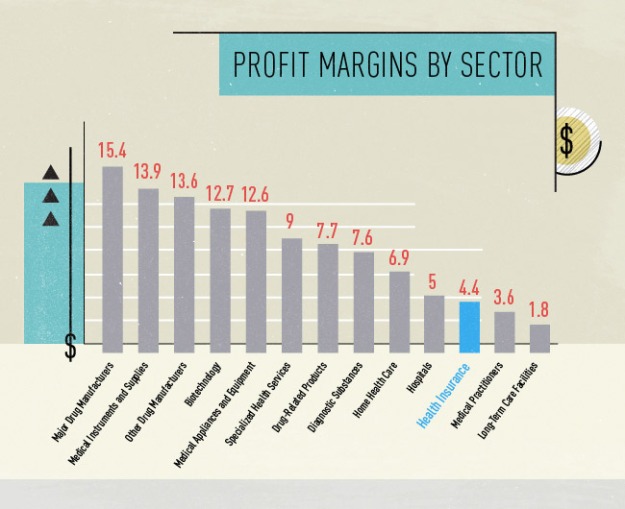
Why do costs keep rising?
Understanding where our health care dollar goes doesn’t fully explain why costs are escalating so quickly. For that, we look to the causes behind the crisis.
The cost crisis problem has many facets, but most fit into four major categories: waste, hidden costs, personal choices, and drugs and technology.
Waste
Each year, we waste one out of every three dollars spent on health care7 – the same amount we spend on national defense.8 Waste includes problems such as duplicate tests, limited use of electronic information systems and medical errors — many of them preventable. Medical errors can also cost lives, up to 100,000 or more every year.9
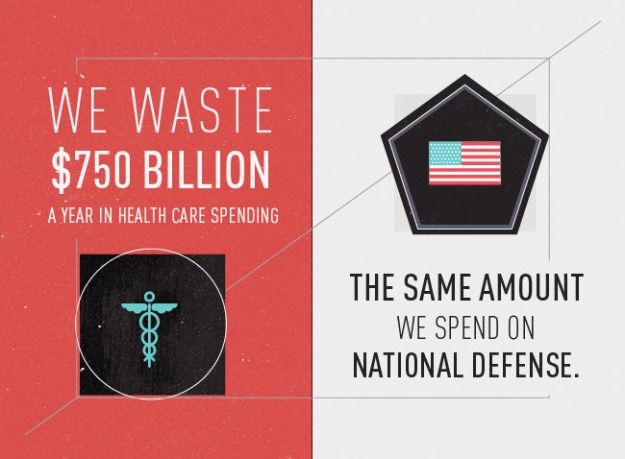
Hidden Costs
It’s shocking how little we know about the cost of health care, considering how much we spend on it. Consumers are simply in the dark when it comes to medical expenses. We aren’t armed with the information to make choices or compare prices and quality, so there’s no market force to keep prices in check. No wonder the same surgery can vary $10,000 in the same town.10 Or that more than 60 percent of Americans don’t know how much their medical costs are until they get a bill.11
Other hidden costs result from current and upcoming regulations, including the new health care reform law, the Affordable Care Act (ACA). The ACA covers more people, and that’s a good goal. But it comes at a cost. Eight new taxes and fees alone are driving insurance premiums even higher.12 Still another hidden cost is known as “cost shifting.” Cost shifting occurs when medical professionals shift unpaid costs from the uninsured,13 or patients with Medicare or Medicaid, to those with private insurance. In 2008, cost shifting from the uninsured hiked annual family health insurance premiums by an average of $1,017.14.14 All of these factors contribute to higher health insurance premiums.
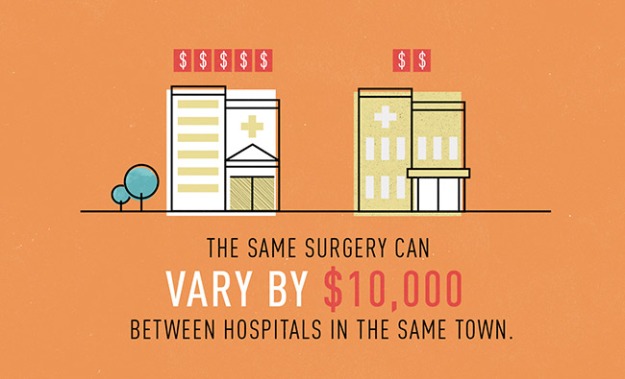
Personal Lifestyle
There is a direct link between our personal and financial health. We eat and smoke too much and exercise too little. And it’s not just a problem confined to adults: Compared with children in 16 industrialized countries, more of our kids are overweight or obese.15 In fact, with the money we spend on treating chronic conditions largely caused by our unhealthy habits, we could nearly eliminate the 2012 federal deficit two times over.16,17 Who pays these costs? We all do, through our health insurance premiums.
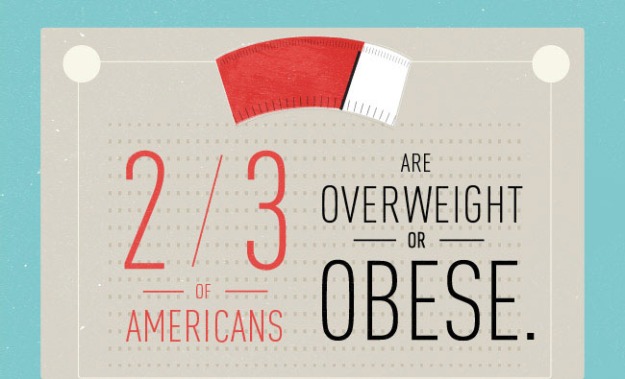
Costly drugs and technology
We’re breaking new ground in technology. Unfortunately, the same is true when it comes to costs. Americans pay twice as much as patients in other industrialized countries for prescription drugs,18 and we spend billions on imaging tests, many of which haven’t been shown to improve health.19 One example is CT scans for migraines, which seldom show the source of headaches or help patients better manage symptoms.20
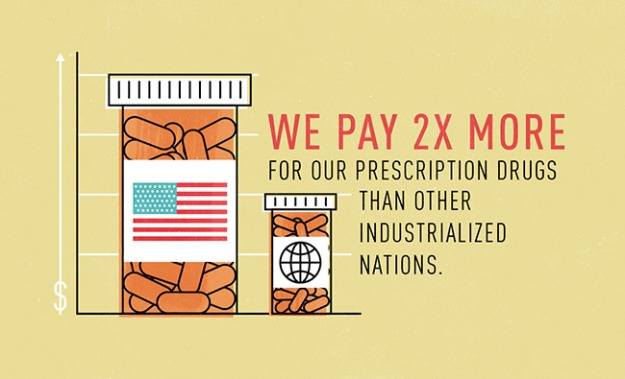
Working toward collaborative solutions
Costs are heading in a direction that is simply unsustainable. The first step to creating solutions is not to look for scapegoats but to understand the underlying problems. The next step is working together to solve them. See how Blue Cross and Blue Shield of North Carolina continues to collaborate with others to rein in health care costs.
- Working with health care organizations to be more accountable to patients and the bottom line
- Helping patients find ways to reduce their medical costs
- Working with hospitals to help reduce error and infection rates
- Using the power of data to help North Carolinians get the most out of their insurance
- Improving care and driving down costs for complex procedures
- Providing tools for customers to compare the cost and quality of doctors and hospitals
1 The Commonwealth Fund, 2012. Accessed March 2013.
2 The Institute of Medicine, 2012. Accessed January 2013.
3 PBS, 2009. Accessed January 2013.
4 Central Intelligence Agency, 2012. Accessed January 2013.
5 America’s Health Insurance Plans, 2009. Accessed January 2013.
6 America’s Health Insurance Plans, 2011. Accessed January 2013.
7 The Institute of Medicine , 2012. Accessed January 2013.
8 Department of Defense, 2012. Accessed January 2014.
9 The New York Times, 2012. / The Institute of Medicine, 1999. Accessed January 2013.
10 BCBSNC Internal data, 2012. Accessed January 2013.
11 The Washington Post, 2012. Accessed January 2013.
12 Affordable Care Act and Reconciliation Act, healthcare.gov, 2010. Accessed February 2013.
13 Families USA, 2009. Accessed December 2012.
14 Families USA, 2009. Accessed December 2012.
15 CNN, 2013. / The Institute of Medicine, 2013. Accessed January 2013.
16 Partnership to Fight Chronic Disease, 2009. / Center for Disease Control and Prevention, 2012. Accessed March 2013.
17 Congressional Budget Office, 2012. Accessed January 2014.
18 CBS News, 2010. Accessed January 2013.
19 America’s Health Insurance Plans, 2011. Accessed January 2013.
20 American Board of Internal Medicine Foundation, 2012. Accessed February 2013.
Reprinted with permission from http://connect.bcbsnc.com/lets-talk-cost-2013/why-talk-cost/.

